This week I want to draw you attention to a couple of ‘call for papers’ opportunities, but first I thought I would mention the ‘Church, Saints and Seals, 1150–1300’ study day at Canterbury Cathedral on Saturday 11 March. The day has been organised by Cressida Williams (Canterbury Cathedral Archives) in conjunction with CKHH at CCCU and MEMS at the University of Kent. For as well as hearing talks from distinguished speakers such as Professor Sandy Heslop and Dr Lloyd de Beer in the morning, there will be a chance to visit both the Cathedral Archives and Conservation Studio. If this sounds of interest to you, please see: https://www.canterbury-cathedral.org/what-s-on/events/11march23-church-saints-and-seals-1150-1300/ for details and how to book. There is a special final discount for students and staff at the two universities.
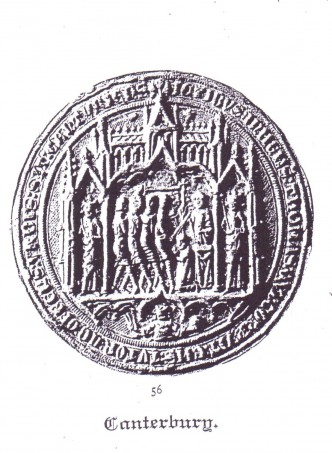
Now to the ‘call for papers’: firstly, Dr Diane Heath will be holding an end of her ‘Medieval Animals Heritage’ project conference under the title ‘Skin and Bone, Wood and Stone’ from Thursday 29 June to Saturday 1 July. She invites abstracts for 20-minute academic papers that explore aspects of research on the theme of medieval and early modern animal studies, green heritage, sustainability, and wellbeing engagement:
“Proposals for papers may include, but are not limited to: • Medieval and early modern animality and animal studies • Medieval and early modern animal fables, macers, bestiaries, and De Avibus • Scholarship on medieval treatises, sermons and parables concerning animals • Folklore, magic, and ritual involving medieval and/or early modern animals • Modern medievalism, postcolonialism, and antiracist scholarship linked to animals • Medieval and early modern animal art and material culture, e.g., parchment and illuminations, bone carvings, and curated collections • Non-European medieval animal studies • Engagement with medieval animal heritage themes, digital animalities, activism, restoration, and craft • Learning and teaching (including SEND activities) involving medieval animal themes • Medieval and early modern environmental issues, green heritage, and biodiversity.
As well as a call for papers, the ‘Skin and Bone, Wood and Stone’ conference is looking for creative contributions. There will be a gallery exhibition space as part of the conference, and we are keen to exhibit creative responses to the theme of Medieval Animals Heritage.
This free and exciting conference will include a tour of Rochester Cathedral and its Textus 900 Exhibition, a wine reception, thanks to the generosity of University of Wales Press Medieval Animals series and will finish with the Medieval Animal Heritage themed Canterbury Medieval Pageant and Family Trail. Please send a title, a suitable image for the programme, and a 150-word abstract, plus your contact details and a brief CV to: Dr Diane Heath at diane.heath@canterbury.ac.uk by 25th March 2023.”
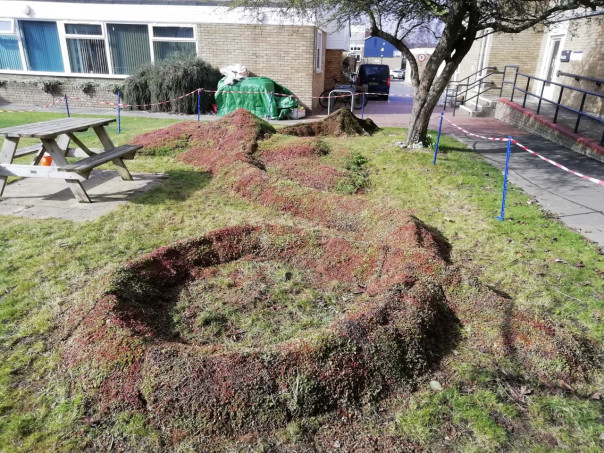
Secondly, Alison Norton, who is researching a doctorate on Norman castles, is organising an online conference on 14 June entitled ‘Imaginative Landscapes and Otherworlds’. This conference will be jointly hosted by Canterbury Christ Church University and the University of Exeter. As she says, “Imaginative landscapes and otherworlds can be broadly defined as spaces that are distinguished from our ‘normal’ spaces by fantastical qualities, such as fairy lands or paradisical abodes, and which abound in literary, folkloric, and religious contexts. Yet the border between the ‘ordinary’ and ‘extraordinary’ space is not so shut off, wherein such realms coexist independent of each other. Rather, it is habitually conceptualized as a porous boundary, allowing otherworldly spaces to be reached and travelled into by inhabitants of our ‘ordinary’ apace (and, in turn, allows for the residents of these fantastical spaces to enter into the ‘ordinary’ world). Accessing and moving to/from otherworldly space is always a liminal activity, albeit sometimes in a manner that is nearly imperceptible.
For instance, in Beowulf the journey to the mere of Grendal’s mother is characterised by passing through, among other sights, a ‘joyless wood’. The mere is an otherworldly space of fantastical monsters, yet eerily accessible, and eerily within riding distance of the ‘ordinary’ world represented by Hrothgar’s great hall.
The conference seeks to explore the theme of accessibility and mobility between the space conceptualized as part of the ‘normal’ world and the fantastical space of imaginative landscapes and otherworlds in pre-modern eras.
Contributions might include but are not limited to: * exploration (or attempted exploration) of otherworldly space; * folkloric journeys to imaginative landscapes; * locating imaginative landscapes within ‘real’ geography; * modes of transportation into/out of an otherworld; * narratives of granting access to an otherworld; * legends of otherworldly inhabitants venturing into the ‘ordinary’ world; * religious journeys to paradisical spaces.”
Proposals should be no more than 250 words for a 15-20 minute paper, with a brief biography (50-100 words). Please send to: iloconferenceofficial@gmail.com and the deadline for submission 20 April.
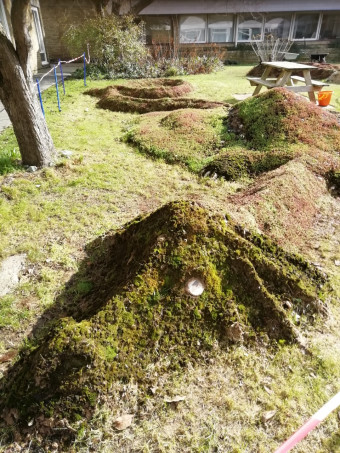
In other news this week, I’m delighted to say there will be a meeting of the Lossenham Project wills group on Thursday 9 March at Lossenham. There will be a report next week, as well as a piece on the Seals Day. However, for this week I want to offer a round-up of the Kent History Postgraduates before just a final couple of notices. So to the postgraduates, it was lovely to have a mix of historians and archaeologists this week, as well as being able to welcome Abi for the first time to the group. As always with these catch-up meetings, it was a matter of asking everyone how they are getting on.
Kaye was the first and while she is working towards her next review, she is exploring matters of community, neighbourliness and why Pluckley seems to have been an area with a reputation for dissent, political and religious, in the form of involvement in Cade’s Rebellion and a ‘hotbed’ of evangelicals in the late 1530s. Moreover, she is also investigating why what appears to have been a local disagreement escalated to such an extent that it became a case held in Star Chamber. These sound fruitful avenues of enquiry and it will be interesting to see how this develops.
Moving to Jane, because she will be giving the next presentation to the group, she only mentioned that it involves Tonbridge Priory. However, she did say that she has been to The National Archives recently, but she is also experiencing some medical issues, and these are and will affect her ability to study, albeit she has managed to do some writing. Maureen, too, has been writing and has submitted the first draft of her first chapter to her supervisors. She has also located another fuller set of accounts for Tonbridge in the state papers.
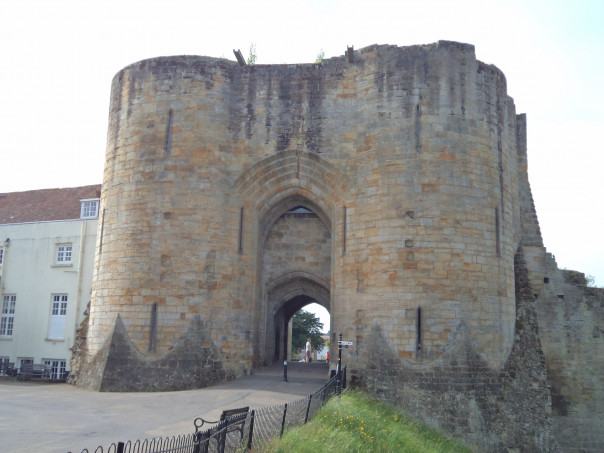
Moving to east Kent, Tracey has been very busy exploring the Moat manor lands, both in terms of on the ground and the potential for some archaeological survey work, as well as in the archives involving a map and survey from 1600. All of this has meant that she has got to know the local community and the relevant landholders. Consequently, she will be giving a lecture to the Fordwich and District Society very soon on her findings. Equally, she has been trying to match up maps and charters as a means to follow matters such as the transfer of manorial holdings, and the role of women in the process as holders of land in their own right. Again, this is very exciting as a way of seeing the place of a certain women from knightly families in Canterbury’s hinterland.
Moving to the archaeologists, Grace said that she has been busy collecting data from her volunteer group at Dover, which is generally going well. She, too, is writing, specifically a section of her review of the secondary literature, but also like the other archaeologists a 5-minute summary of her doctoral project for a presentation. She with the other archaeologists can usually be found on the top floor of Fynden and today Ali was there, as well as Abi. I have already mentioned Ali’s call for papers, but regarding her doctorate more specifically, she is preparing for her upgrade and is currently investigating what we know about the ways the Normans moved through the landscape. Thus, she is examining routeways and other physical and man-made features, as well as how such factors may have influenced community (ities) identity, looking particularly at Devon. She is also considering matters such as social memory, but equally just how relevant would these ideas have been to these past groups and communities – did they really care?!
As I said, it was great to meet Abi for the first time. She is working on early modern ballads as a means to examine non-conformity within society, and she, too, is working on her literature view. She is keen to think about these texts through the sense of hearing – how, where, why, etc and because of her interest in digital history, this in likely to involve digital outputs and the making of soundscapes – tavern and street. Her first review will be coming up soon.

Janet was the final speaker and, like many others she is busy writing, but this is far more a case of editing because she is coming up to her submission date. Currently, she is investigating matters relating to the movement of people, individuals and groups, between London and Ruxley in north-west Kent, which has a whole range of implications for the study of these Kentish communities.
Hearing about these various projects is great, and I thought I would just conclude with a brief news-round of a few other matters, some of which I’ll pick up next week. Firstly, as an adjunct to our ‘Kent’s Maritime Communities’ project, we have been given the extra money from Research England for the temporary exhibition and three free workshops to be held at St Mary’s church, Dover, in July, where I will be working with Kieron Hoyle, a postgraduate studying Tudor Dover and the Maison Dieu. This will provide a chance to explore ways of engaging with maritime communities today, to offer people a means to investigate what it would have been like in late medieval Dover – trades practised, family relationships, and the role of their parish church. Moreover, it will also strengthen our links with Dover Museum and Jon Iveson, and with the Maison Dieu and Martin Crowther.
Another project that is going from strength to strength is the Lossenham Project wills group and this week we will be meeting at Lossenham to plan matters for the summer. The group is continuing to grow and there will be some people meeting in person for the first time this week, as well as others who, having finished my latest set of palaeography workshops, will be joining the group shortly. So, as always, many thanks to this great group of enthusiastic volunteers.
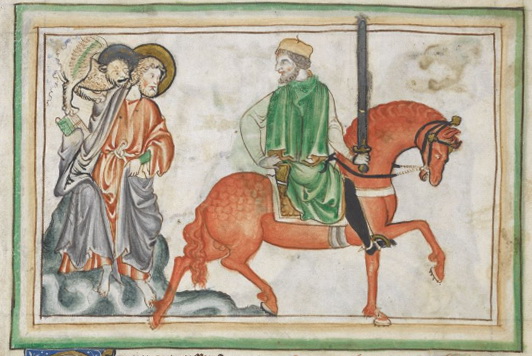
Finally, on a chilly evening this week I had the chance to give a presentation to the Whitstable Local History Society. This had started life in 2020 as a talk on plague in Kent but due to the pandemic etc only finally happened this week. Consequently, it had become ‘The Four Horsemen of the Apocalypse in late medieval Kent’ and I’ll just leave you with a snippet from ‘War’ in the form of the English Rising of 1381, and why this is a better term than Peasants’ Revolt. I’m borrowing two entries from Dr Chris Briggs’ et al.’s project database to show the range of people prosecuted as rebels by the crown. From his goods Geoffrey Potet of Dartford, and thus from a small town, appears to have been a prosperous brewer having bed furnishings, a table, benches, a chest and casket, and a silver spoon. In contrast, John Chyddeston from the parish of Lenham was seemingly primarily engaged in farming in that he grew wheat, barley, peas and vetch, as well as grass for hay. Interestingly, his livestock appears to have been exclusively pigs and poultry.
 Centre for Kent History and Heritage
Centre for Kent History and Heritage Sheila Sweetinburgh
Sheila Sweetinburgh 1468
1468

